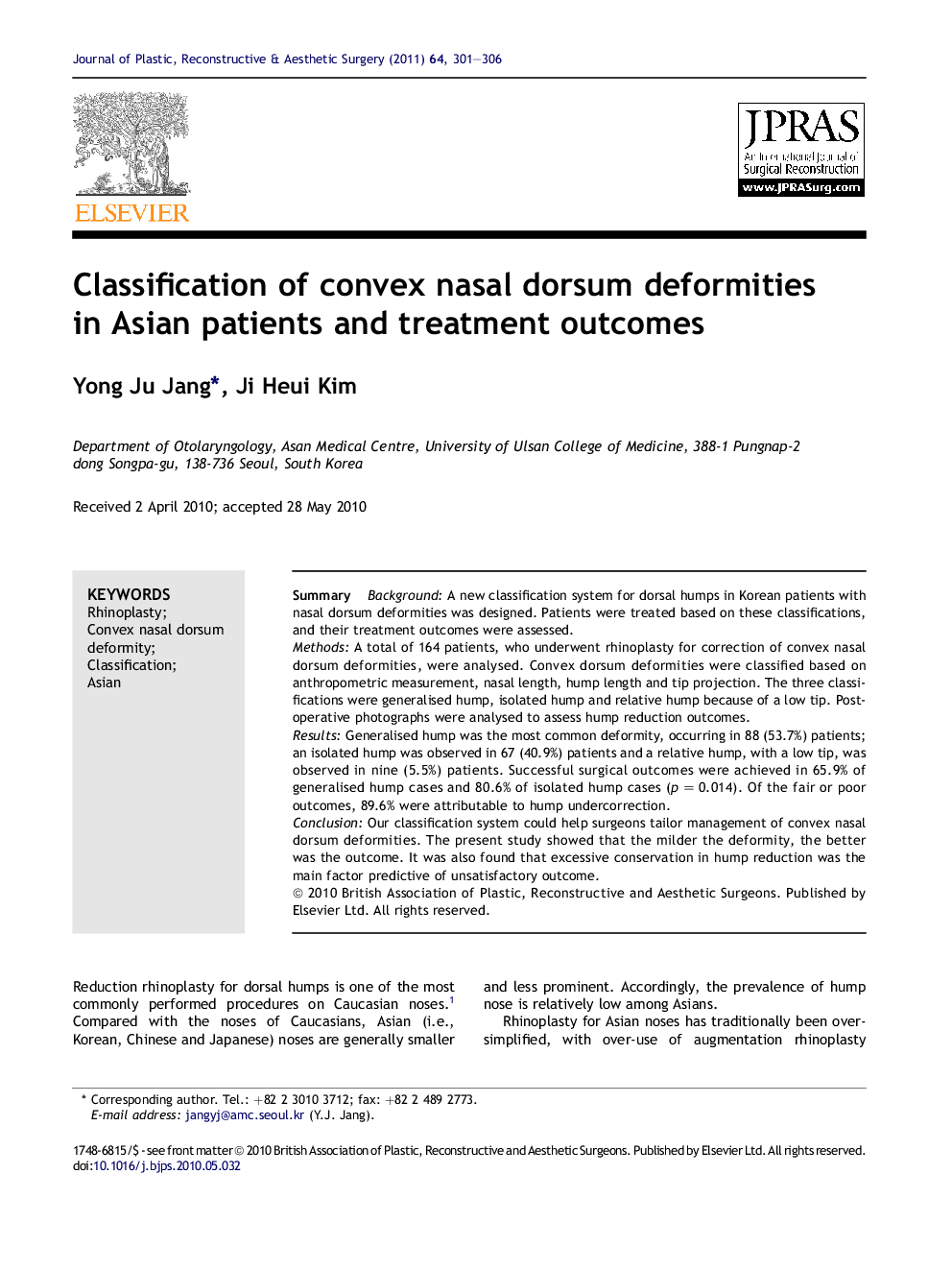| کد مقاله | کد نشریه | سال انتشار | مقاله انگلیسی | نسخه تمام متن |
|---|---|---|---|---|
| 4119125 | 1270347 | 2011 | 6 صفحه PDF | دانلود رایگان |

SummaryBackgroundA new classification system for dorsal humps in Korean patients with nasal dorsum deformities was designed. Patients were treated based on these classifications, and their treatment outcomes were assessed.MethodsA total of 164 patients, who underwent rhinoplasty for correction of convex nasal dorsum deformities, were analysed. Convex dorsum deformities were classified based on anthropometric measurement, nasal length, hump length and tip projection. The three classifications were generalised hump, isolated hump and relative hump because of a low tip. Postoperative photographs were analysed to assess hump reduction outcomes.ResultsGeneralised hump was the most common deformity, occurring in 88 (53.7%) patients; an isolated hump was observed in 67 (40.9%) patients and a relative hump, with a low tip, was observed in nine (5.5%) patients. Successful surgical outcomes were achieved in 65.9% of generalised hump cases and 80.6% of isolated hump cases (p = 0.014). Of the fair or poor outcomes, 89.6% were attributable to hump undercorrection.ConclusionOur classification system could help surgeons tailor management of convex nasal dorsum deformities. The present study showed that the milder the deformity, the better was the outcome. It was also found that excessive conservation in hump reduction was the main factor predictive of unsatisfactory outcome.
Journal: Journal of Plastic, Reconstructive & Aesthetic Surgery - Volume 64, Issue 3, March 2011, Pages 301–306